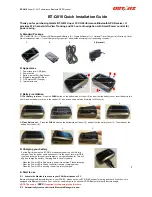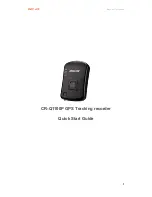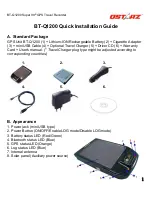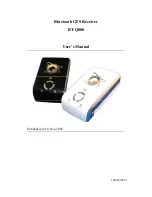
PA G E 3
I N S T R U C T I O N M A N UA L
4 0 6 M H Z P L B
In the past, using the analogue system, (which became
obsolete in February 2009) extensive and lengthy searches
have been carried out for missing persons, sometimes to
no avail. Your GME PLB is a self contained 406 MHz digital
radio transmitter that emits an internationally-recognized
distress signal on a frequency monitored by the COSPAS-
SARSAT satellite system. The MT410 and MT410G contain
a unique identity code which can be cross referenced
to a database of registered 406 MHz beacons, allowing
the beacon’s owner to be immediately identified in the
event of an emergency. Both PLB models include a high
performance solid state light and 121.5 MHz VHF homing
signal to assist in leading rescuers to your precise location.
The MT410G also features an integrated 50 Channel GPS
Receiver which when activated, will automatically acquire a
position and relay the latitude and longitude of the beacon
along with the personal identifier and emergency signal.
ABOUT THE COSPAS-SARSAT
SYSTEM
The COSPAS-SARSAT system is a complete global search
and rescue service using geostationary and polar orbiting
satellites. Many countries provide ground facilities known
as Local User Terminals (LUTs). Polar orbiting satellites
provide complete, although non-continuous, coverage of
the earth (due to fact that these satellites can only view a
portion of the earth at any given time) and can accurately
resolve an active beacons’ location. Additionally,
geostationary satellites can give an immediate alerting
function in many regions of the world.
The basic COSPAS-SARSAT concept is illustrated in the
following diagram
ABOUT 406 MHZ BEACONS
406 MHz beacons provide more accurate and reliable
alert data to search and rescue agencies than the older,
phased out, 121.5/243 MHz systems. The older 121.5
MHz analogue system required that the satellite be within
view of both the beacon and the LUT before it could
transmit the beacons’ position. This limited the coverage
to an area immediately surrounding the LUT. However,
the digital nature of the 406 MHz system means that
the satellites are able to store the beacons’ position
and digital message, no matter where in the world it is
received. These details are then relayed to the next LUT
that comes into range, giving the 406 MHz system true
global coverage.
REGISTRATION & TRANSFER
OF OWNERSHIP
Registration of your 406 MHz satellite PLB
with the Registration Section of your National
Authority is important and now mandatory in
most countries because of the global alerting
nature of the COSPAS-SARSAT system.
Owner Registration Forms for registering your beacon may
be supplied within the packaging, otherwise, your National
Authority will be able to provide the correct forms. Up to
date forms are often available online.
The information provided in the registration is used only
for search and rescue purposes. Promptly fill in the owner
registration form upon completion of the sales transaction,
then mail, fax or email it to your National Authority. If the
PLB is to enter service immediately, complete the
registration form and fax or email the information.
Australian Registration can also be done online at:
www.amsa.gov.au/beacons
Should the PLB be transferred to a new owner, as
the previous owner you are obligated to inform your
National Authority by email, fax, letter, telephone or
online of the name and address of the new owner. The
new owner of the beacon is also required to provide
their National Authority with the information as shown
on the registration form. This obligation transfers to all
subsequent owners.
NOTE:
Your MT410/MT410G has been programmed
with a unique identifying code which will be
transmitted by the beacon in an emergency.
Registering your beacon provides the authorities with
immediate access to your details when the beacon
is detected. This means they will know who you are
and who your emergency contacts are. In situations
of accidental activation they can also immediately
eliminate your beacon as an emergency situation by
contacting you when activation is detected.
Registration contacts
Australian users
Beacon Registration Section,
Australian Maritime Safety Authority
GPO Box 2181, Canberra ACT 2601
Online: www.beacons.amsa.gov.au
Email: [email protected]
43003-11_MT410&GinsMan.indd 3
26/08/13 3:59 PM





























